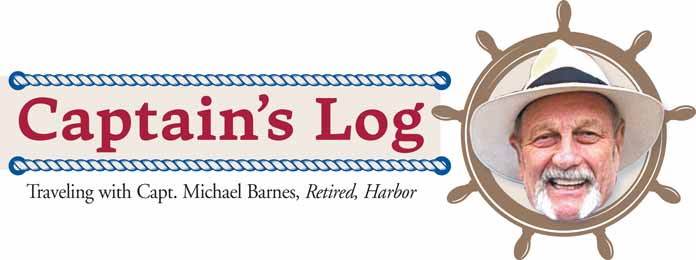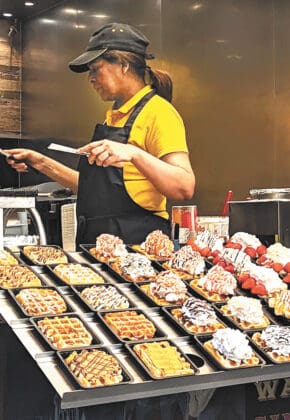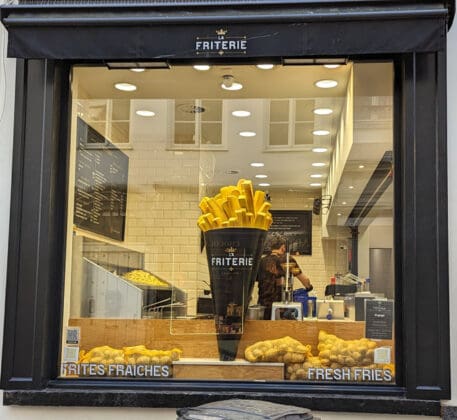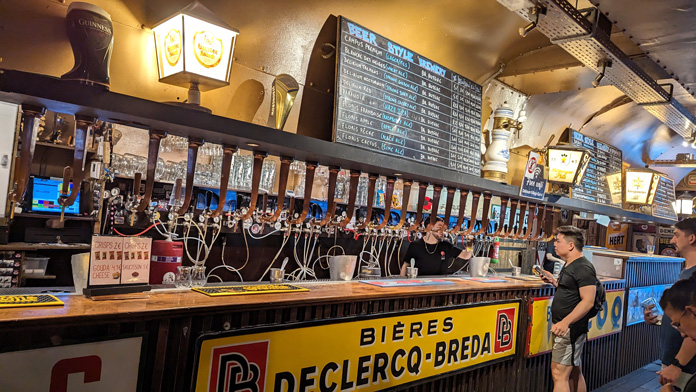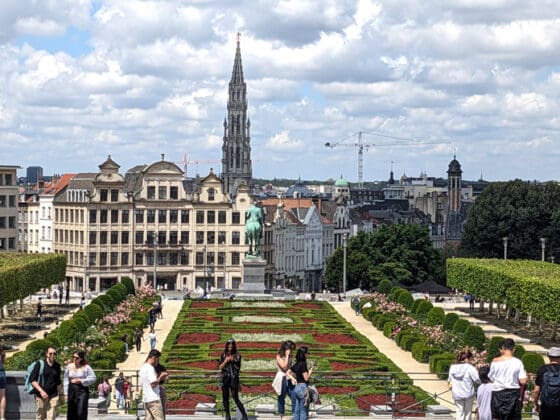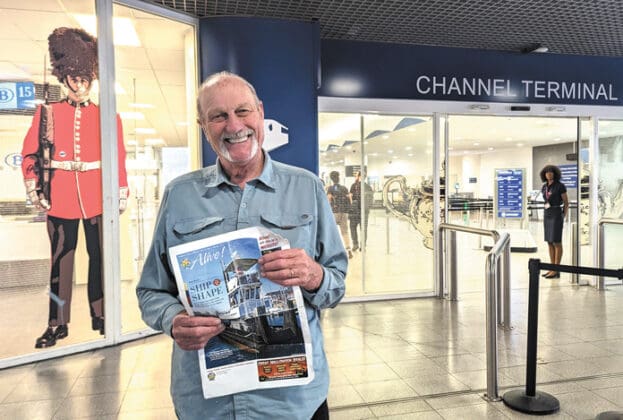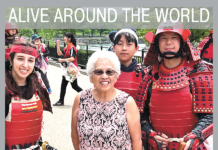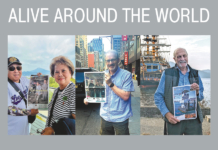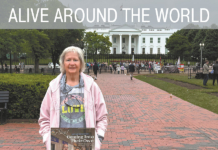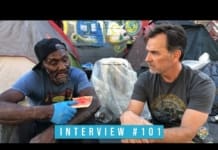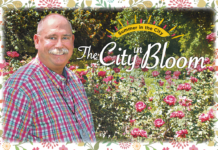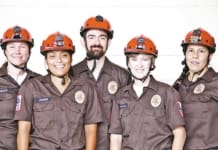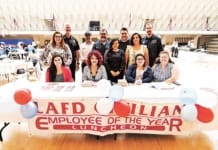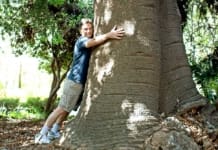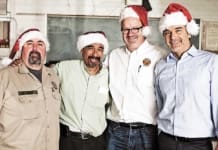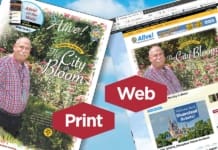 Send in your ALIVE! AROUND THE WORLD
Send in your ALIVE! AROUND THE WORLD
Take Alive! with you wherever you go! Bring your recent copy of Alive! with you when you travel and snap a high resolution photo of you holding Alive!
Send in your pictures and descriptive text using the online form, and we’ll publish it.
SUBMIT YOUR ALIVE! AROUND THE WORLD
Letter From Brussels.
Sprouts, Waffles and Liquid Velvet
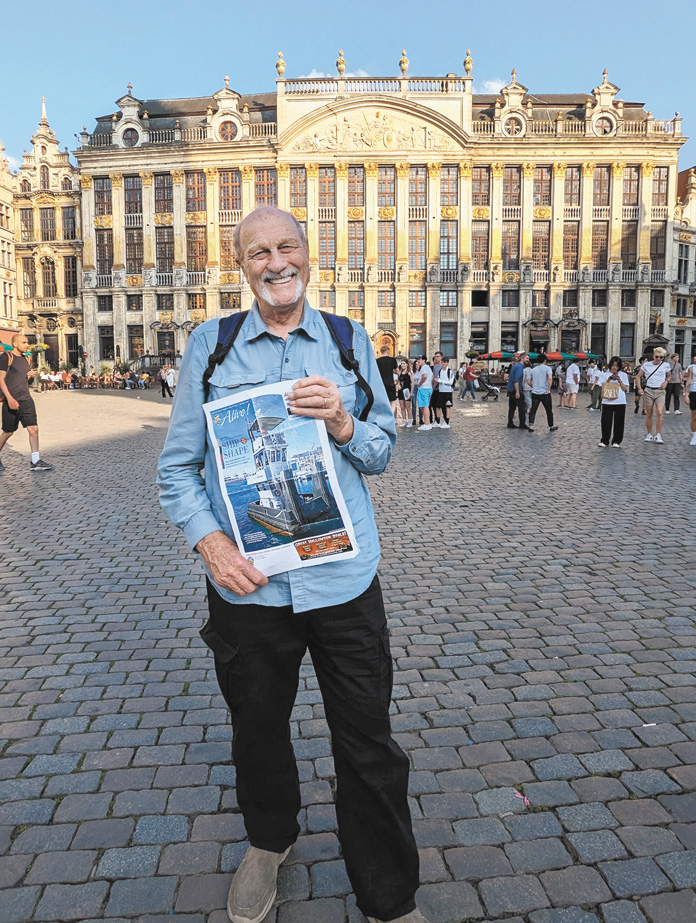
Brussels is the trilingual capital of Belgium and is famous for its chocolate, beer, waffles and medieval architecture.
It is a small, walkable city that is easy to explore. Many tourist attractions are within walking distance of the Grand Place or Grote Market Square. The Flemish Baroque-style buildings surrounding the Square, ranging from the former trades Guildhalls to the city’s museum in the Neo-Gothic King’s House near the Flamboyant Town Hall, are richly decorated with ornate statues and sculptures. If you look closely, you will find a Hard Rock Cafe in one of them.
It’s a city full of gastronomic delights; it gave its name to Brussels sprouts (sometimes called mini cabbages), which have been cultivated here since the 16th Century. The humble Belgium waffles we all love began in the Middle Ages as light and thin cakes cooked between two irons sold as a crispy street snack outside churches. Today, there are more than 30 types of waffles in the supermarkets here. Still, most don’t taste anything like Belgian waffles, which gained popularity in the United States after the New York World’s Fair in 1964 when they were introduced as Bel-Gem waffles. Those waffles are called Brussels waffles here, being airier and not as sweet as the other popular waffles from Liege, which are very thick, rich, and full of pearl sugar.
Brussels’ “oldest citizen” and most popular tourist attraction is the Manneken Pis, a small bronze statue cast by Jerome Duquesnoy in 1619, depicting a naked boy urinating into a fountain. Originally called “Petit Julien,” the most popular legend claims that the city was under attack, and the enemy had placed barrels of gunpowder by the city gate, lit the fuse and retreated. Fortunately, a little boy desperately needed to relieve himself, and in doing so, he extinguished the fuse. Today, the statue is dressed up in costumes for special occasions. Not to be outdone and to be more politically correct, there is a female counterpart fountain called Jeanneke Pis and a dog, Het Zinneke Pis, who is not a fountain but a bronze statue doing what male dogs do when they see a post!
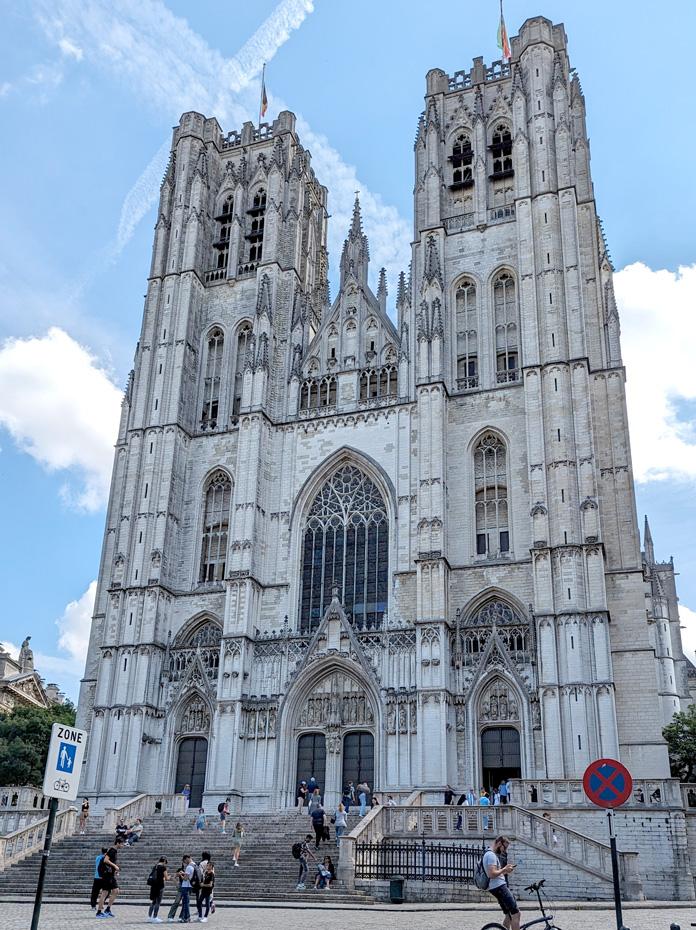
Close by is the beautiful Saint-Michel-et-Gudule Cathedral, which, like all buildings, was plagued by pigeon droppings. However, the cathedral installed a falconer on the roof, so there are no droppings now.
If it rains, there are many fascinating museums, like the Comic Art Museum and the six museums at the Royal Museum of Fine Arts. Or check out one of the many colorful local bars. The beer here is like liquid velvet, even though the IPAs are not as bitter or exotic-tasting as they are in the USA. All breweries have a special glass for their product. There is even a specially shaped glass holder for coach drivers so that the beverage does not spill while driving their horse-drawn carriages. For more than 500 years, the national spirit has been jenever, from which gin evolved. It’s great with tonic.
The Middle Eastern area around the central train station is full of exciting ethnic restaurants, many of which, like the Zain al-Sham and most of the restaurants in the city, are staffed by immigrants. There are also many small, clean, inexpensive hotels here.
Note of interest: Famous actress Audrey Hepburn was born in Brussels.
If you want to see more tourist attractions, ride a Hop-On-Hop-Off bus. They cover much of the city quickly and tell you what you see when you see it.
— The Captain


